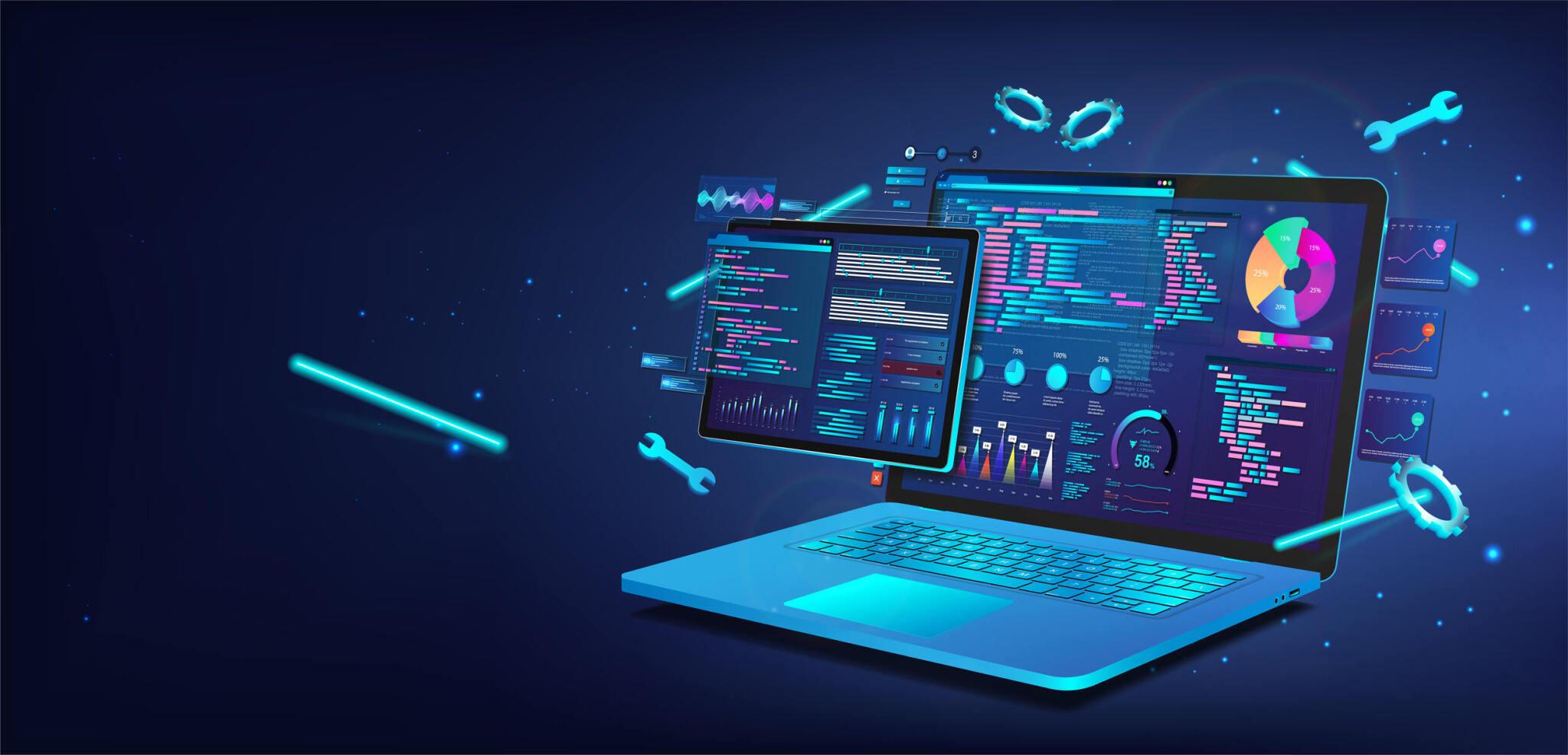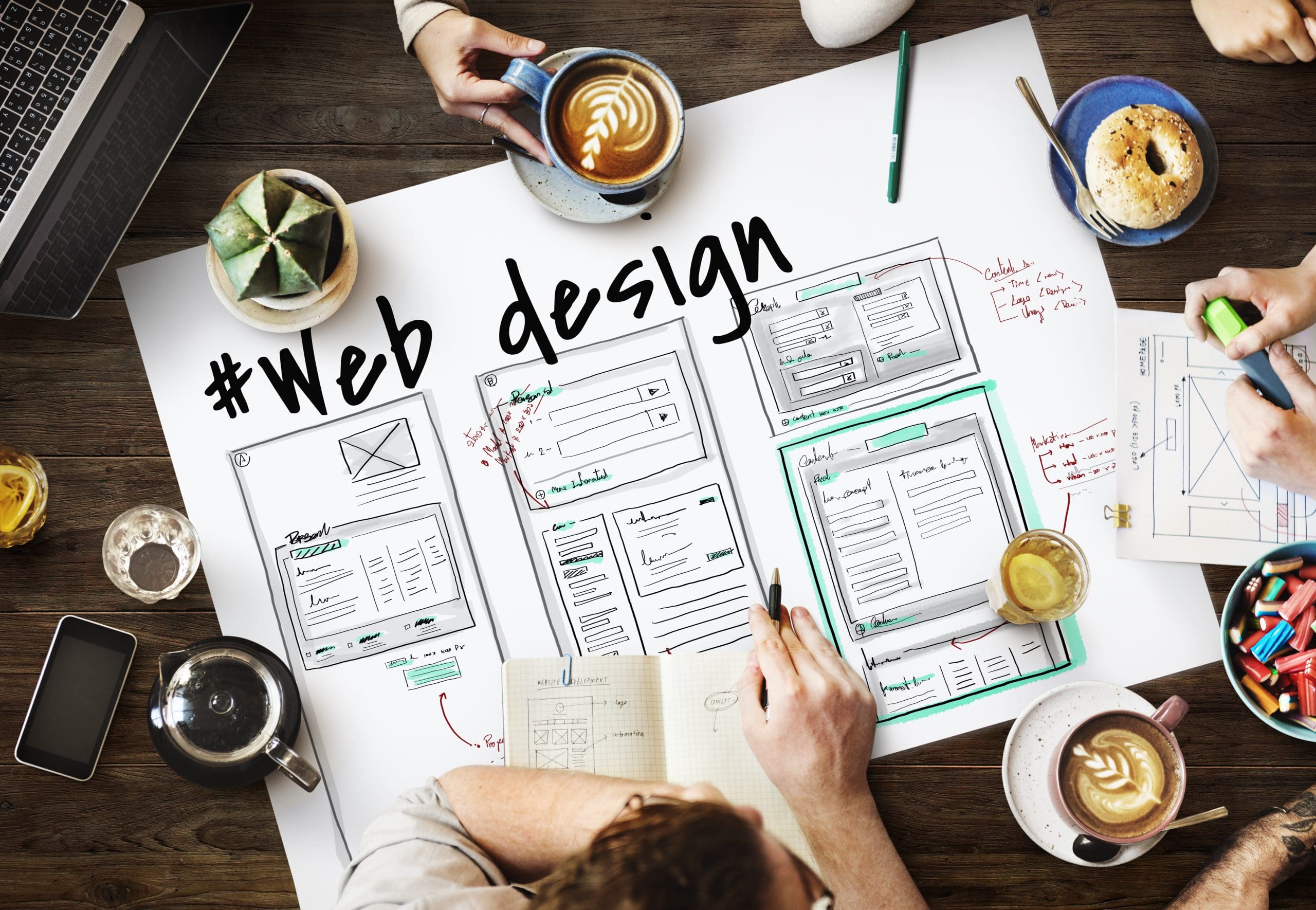Discovering Imaginative Patterns in Web Design for Modern Services
The landscape of web design is continuously developing, reflecting the dynamic requirements of modern services. Recent fads highlight a choice for minimalism, strong typography, and interesting interactivity. Companies significantly focus on user experience through mobile-first principles and customized content. Additionally, a concentrate on sustainability is acquiring grip. Understanding these trends is important for businesses intending to attract attention in a jampacked industry. What implications do these shifts hold for the future of electronic engagement?
Embracing Vibrant Typography
Strong typography has actually become a specifying component in modern web design, capturing interest and conveying messages with striking quality. This trend prioritizes aesthetically impactful message that enhances user involvement and brand name identification. Developers commonly use unique fonts and extra-large typefaces to produce a power structure, directing viewers through content seamlessly.
The tactical use bold typography enables efficient storytelling, allowing brands to connect their worths succinctly. It serves not just aesthetic objectives but also useful ones, as it improves readability across devices and display sizes.
As sites compete for user attention, strong typography stands apart in a saturated digital landscape. Its convenience makes it possible for designers to experiment with contrasting designs and shades, better intensifying its effectiveness. Ultimately, accepting bold typography represents a shift towards even more expressive and communicative web design, promoting a much deeper link between brand names and their audiences.
The Increase of Minimalist Layout
As digital settings become progressively cluttered, the rise of minimal layout uses a rejuvenating alternative that prioritizes simplicity and capability. This style approach remove unnecessary components, permitting material to take center stage. By concentrating on tidy lines, ample white space, and a restricted color scheme, minimalist style boosts user experience and boosts navigation.
Businesses adopting this trend purpose to communicate their brand name message clearly and efficiently, promoting a feeling of calm and clarity. The absence of distractions assists users concentrate on necessary info, resulting in enhanced involvement and conversion prices. Furthermore, minimalist design lines up well with mobile-first strategies, ensuring that sites continue to be straightforward and accessible across different tools.
Ultimately, the rise of minimal style shows a broader change towards prioritizing user requirements and choices, making it an effective tool for modern-day companies looking to make a long lasting impact in the electronic landscape.
Immersive Animations and Interactivity
While lots of web designers welcome minimalist visual appeals, an additional compelling fad obtaining grip is the use of immersive animations and interactivity. This strategy boosts user involvement by creating intriguing experiences that draw site visitors into the content. Developers employ vibrant elements such as animated histories, scrolling effects, and interactive infographics to interact complicated concepts in an obtainable way.
These computer animations not just give aesthetic passion but additionally overview users with the navigation procedure, making interactions extra user-friendly. As an example, float effects and computer animated shifts can encourage customers to explore additionally, causing enhanced time spent on the website.
This trend lines up with the more comprehensive movement in the direction of storytelling in web design, where computer animations offer as narrative devices that convey brand name messages effectively. By incorporating immersive animations and interactivity, companies can distinguish themselves in a congested online landscape, ultimately boosting user contentment and brand name loyalty.
Mobile-First Design Principles
Mobile-first layout concepts stress focusing on user experience by ensuring internet sites work perfectly on smaller sized screens. This approach incorporates receptive design strategies that adapt to various device dimensions while keeping aesthetic stability. Furthermore, it focuses on touchscreen navigation design, enhancing usability for mobile customers.
Prioritizing User Experience
How can designers effectively prioritize user experience in a significantly mobile-centric world? Emphasizing mobile-first layout principles is necessary, as customers mostly engage with sites via mobile phones. This strategy encourages developers to improve web content, ensuring it is easily available and accessible on smaller sized displays. Key techniques consist of streamlining navigating, lessening tons times, and employing touch-friendly elements that improve interactivity. In addition, focusing on readable typography and intuitive designs can significantly improve user contentment. Developers ought to constantly gather user comments to fine-tune their strategies, adjusting to evolving user demands and preferences. By concentrating on these elements, organizations can produce an interesting digital experience that cultivates commitment and drives conversions, inevitably aligning with the assumptions of today's mobile individuals.
Responsive Format Methods
Developers welcome responsive format methods to create adaptive and adaptable internet experiences that provide to various screen sizes. This approach focuses on mobile-first design principles, guaranteeing peak performance on smaller sized tools before scaling up for bigger screens. By using fluid grids, Get the facts flexible photos, and media queries, designers can preserve a cohesive aesthetic identification throughout all systems. This method not just enhances user interaction yet likewise boosts online search engine positions, as mobile-friendly websites are favored by search algorithms. Furthermore, responsive layouts permit companies to reach a more comprehensive target market, suiting users on tablets, mobile phones, and desktop computers alike. On the whole, executing these techniques is necessary for modern-day web design, making certain that services remain competitive in an ever-evolving electronic landscape.
Touchscreen Navigating Design
With the rise of mobile devices, touchscreen navigating has actually ended up being an essential aspect of web design. Developers are increasingly adopting mobile-first principles to improve user experience and engagement. agency for web design. Effective touchscreen navigation prioritizes bigger switches and instinctive gestures, enabling users to connect quickly with content. This method decreases frustration and motivates expedition, as individuals can browse effortlessly with their fingers. Furthermore, incorporating swipe motions and faucet functionality caters to the all-natural behaviors of mobile customers. Feedback mechanisms, such as visual signs and computer animations, boost usability even more by confirming actions. As touchscreens control user communications, using these layout aspects not only lines up with modern-day assumptions yet additionally fosters a more easily accessible and pleasurable surfing experience for all individuals
Personalized User Experiences
What makes a customer really feel really involved on a website? The solution typically exists in personalized user experiences. By tailoring material and navigating to individual preferences, organizations can develop a purposeful link with their audience. This personalization can be achieved through numerous techniques, such as evaluating user actions, making use of cookies, and supplying tailored referrals based on previous interactions.
For circumstances, e-commerce platforms that suggest items based upon surfing background not just enhance user experience however also raise conversion prices. In addition, including dynamic web content that adjusts to the user's area or time of day can additionally enrich involvement.
Additionally, personalized greetings or messages can make individuals feel valued and understood. As modern-day companies seek to stick out in an affordable electronic landscape, embracing customized user experiences ends up being necessary, promoting loyalty and motivating repeat visits. Ultimately, this approach changes a common web site right into an interactive platform that resonates with its audience.
Sustainability in Web Design
As the electronic landscape continues to develop, the importance of sustainability in web design has gained substantial focus. Designers are progressively knowledgeable about the ecological impact their developments can have, motivating a change towards environment-friendly techniques (Website Design Agency). Lasting web design focuses on maximizing internet sites to reduce energy usage and carbon footprints. Approaches include utilizing minimalistic style concepts, optimizing photos, and utilizing efficient coding practices to enhance loading speeds
Moreover, the option of hosting service providers plays a crucial duty; several developers are now selecting environment-friendly hosting services powered by sustainable power. By focusing on access and straightforward navigating, lasting styles also deal with a more comprehensive target market, enhancing use. This mindful technique not just interest environmentally-minded consumers but also contributes to the general long life and performance of websites. Ultimately, sustainability in web design shows an expanding fad towards responsible electronic practices that line up with modern business values.

Often Asked Inquiries
Just How Can I Choose the Right Color Pattern for My Site?
To choose the appropriate color pattern for an internet site, one must consider the brand name's identity, target audience, and emotional effect. Using color theory and testing mixes can improve user experience and aesthetic allure considerably.
What Are the Finest Tools for Prototyping Web Layouts?
The most effective tools for prototyping website design consist of Figma, Sketch, Adobe XD, and InVision. These platforms provide instinctive user interfaces, collaboration features, and extensive libraries, making them suitable for developers to develop and refine their principles efficiently.
Exactly how Do I Determine the Efficiency of My Web Design?
To determine web design efficiency, one should evaluate user interaction metrics, conversion rates, and usability feedback (Website Design Agency). A/B screening and heatmaps can likewise offer understandings into user actions, directing essential modifications for improved performance and user experience
What Are Usual Web Design Mistakes to Prevent?
Usual web design blunders include messy designs, inadequate navigation, sluggish filling times, lack of mobile optimization, poor contrast, visit their website and ignoring user responses. Staying clear of these mistakes enhances user experience and boosts overall efficiency of the web site.
Exactly how Typically Should I Update My Site Design?
An internet site layout should be updated every 2 to three years, or Web Design services sooner if considerable modifications in branding or technology occur. Normal updates maintain the site fresh, useful, and straightened with present user expectations.
